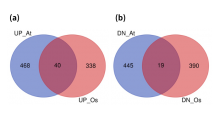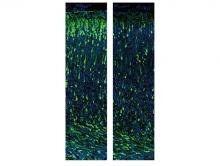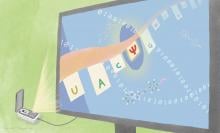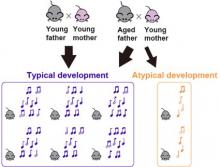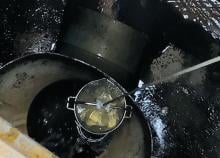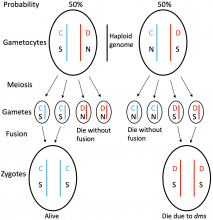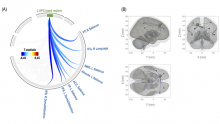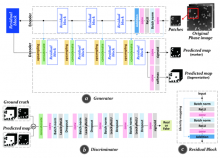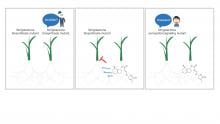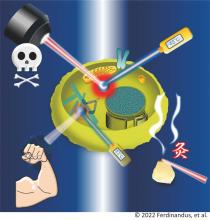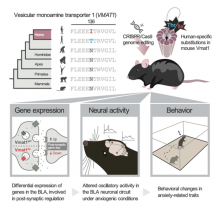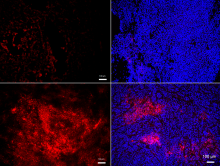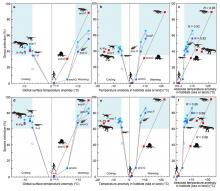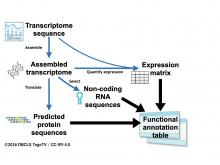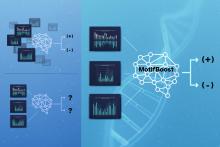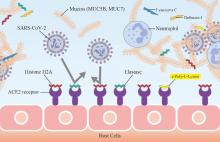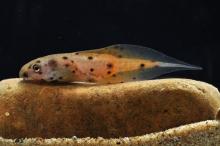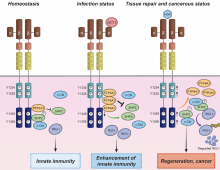Biology
News
07 Sep 2022
Giants in History: Hwang Hye-seong (5 July 1920 – 14 December 2006) was an expert on Korean royal court cuisine, the knowledge of which she dedicated her career to keeping alive.
01 Sep 2022
Lim Boo Liat (21 August 1926 – 11 July 2020), a leading authority in the conservation of Malaysia’s biological diversity, had his initial interest in the outdoors piqued by nature lessons in school.
31 Aug 2022
Scientists understand genes related to intellectual disabilities, but are often unsure of how mutations in these genes cause developmental disorders. Now, a research group led by two Tohoku University researchers has uncovered the role of CHAMP1—a gene whose mutations are associated with intellectual disability—in neuronal development.
26 Aug 2022
Researchers have made perovskite solar cells more efficient and stable, A new cause of Parkinson's related cell death, Hibernating superpower is in the blood, Common mechanism for cancer and atherosclerosis, COVID-19 antibody skin-based test. Read all in the August's Editor's Choice plus an Interview with Prof Sutee Yoksan on The story behind the new dengue vaccine & this month's Asia Research News 2022 magazine pick - The evolutionary history of puddle frogs.
26 Aug 2022
Osaka Metropolitan University researchers have clarified that an adenosine analog—the antibiotic toyocamycin—is taken up into cells by a concentrative nucleoside transporter (CNT) in Candida albicans, an opportunistic yeast fungus that causes candidiasis infections. This was also true of the human CNT3 protein. They found that C. albicans CNT and human CNT3 proteins take up similar molecules at different rates depending on their molecular size and structure. These results are expected to lead to the development of new antifungal drugs that are effective only against C. albicans and safe for humans.
23 Aug 2022
Two new approaches could help scientists use existing sequencing technology to better-distinguish RNA changes that affect how their genetic code is read.
23 Aug 2022
A baby’s cry is a form of communication used to attract attention from adult caregivers, and every baby cries in a similar but distinct way. An international research team has studied the vocal behavior of baby mice, called pups, to determine how the age of the father affects the pups’ vocal communication and body weight development. Their study will help them better understand vocal development in human babies.
22 Aug 2022
Scientists show that there is a close association between clinical cases of COVID-19 and viral loads in wastewater, with the viral loads picking up to two days before the cases were detected.
19 Aug 2022
Two novel hypotheses have been proposed that address the “two-fold cost of sex”: one of the biggest enigmas in the evolution of sexual reproduction.
11 Aug 2022
Human brains learn patterns over time and we don’t even realize it. New insight into how this works could improve learning and other cognitive processes.
10 Aug 2022
- DGIST Professor Seo Dae-ha's team developed an experimental strategy to control and observe the chemical reaction of a single nanocatalyst using an optical microscope
- Expected to contribute to catalyst design based on accurate understanding of the photocatalytic reaction through an analysis method that helps understanding the electron excitation phenomenon and transition path.
10 Aug 2022
- Developed technology to accurately inspect the quality of red blood cells stored for a certain period of time with AI-based holography technology
- Possible to inject clean, healthy red blood cells into the patient. Expected to help minimize side effects of blood transfusion after surgery.
09 Aug 2022
Researchers at Kanazawa University report in Communications Biology that using common chemicals for fixing living cell samples for microscopy studies causes membrane proteins to aggregate.
09 Aug 2022
Strigolactones (SLs) trigger parasitism and symbiosis in the rhizosphere and function as a hormone in plants.
Yoneyama et al. demonstrate that rice plants sense SLs in the rhizosphere and regulate their SL biosynthesis and exudation, suggesting that SLs act as a cue for a plant-plant communication in rice plants.
08 Aug 2022
Researchers at Kanazawa University report in ACS Nano the development of a nanoparticle that acts as a heater and a thermometer. Inserting the nanoparticle in living cells results in a heat spot that, by switching it on and off, enables the controlled modulation of local cellular activities.
05 Aug 2022
New research using genome editing technology has allowed scientists to create a model and assess a gene mutation associated with neuropsychiatric disorders in humans. The study has revealed how the mutation functions in the brain and affects anxiety and sociality.
04 Aug 2022
When the evolution of towns and of roads are modeled together, the natural landscape alone is enough to predict the actual arrangement of real towns.
25 Jul 2022
A key molecule for cancer metastasis has been identified as a molecule already known for its involvement in cardiovascular disease, suggesting a possible treatment approach for both diseases simultaneously.
22 Jul 2022
A professor emeritus at Tohoku University has unearthed evidence pointing to a strong relationship between the magnitude of mass extinctions and global temperature changes in geologic times. This interesting correlation reveals a more optimistic outlook on future extinction events.
22 Jul 2022
Research team develops functional annotation workflow for genome sequencing of insects
20 Jul 2022
Researchers at the Institute of Industrial Science at The University of Tokyo introduce a machine learning method to help predict past infection from receptor sequences of immune T-cells even when little data is available, which may help improve human health and our understanding of adaptive immunity
19 Jul 2022
A series of drone images taken by researchers from the Wildlife Conservation Society (WCS) and partners may show the world’s most endangered turtle, Swinhoe’s softshell turtle (Rafetus swinhoei).
19 Jul 2022
Saliva and oral cells are important routes for transmission and infection by the novel coronavirus COVID-19. A research group led by Associate Professor Misako Matsubara and Specially Appointed Professor Katsutoshi Yoshizato of Osaka Metropolitan University hypothesized that the body's innate immune system may protect against SARS-CoV-2 infection. The onset and severity of COVID-19 are age-dependent, as are parts of the innate immune system like saliva production and quality, which are significantly reduced in the elderly. They found that saliva from healthy individuals prevented the binding of the SARS-CoV-2 spike protein S1 on the viral envelope to the angiotensin-converting enzyme 2 (ACE2) receptor present on the plasma membrane of human cells in a concentration-dependent manner.
11 Jul 2022
A novel molecular pathway involving cell signalling proteins in the brain may explain how stress affects neuropsychiatric lupus with diffuse neuropsychological manifestations.
11 Jul 2022
Important, yet often neglected: Tadpoles play a critical role in the ecology of aquatic habitats. On 279 pages, a new book presents descriptions for 99 species from the southeast Asian island of Borneo, covering all species commonly found, as well as representatives of the more cryptic ones. LIB-scientist Alexander Haas and his team of international collaborators worked over 20 years on its completion and just released “A Guide to the Tadpoles of Borneo”.
07 Jul 2022
Biologists from Hong Kong Baptist University (HKBU) have discovered in Hong Kong waters three new species of hard coral which have never been identified anywhere else in the world. The findings come shortly after their discovery of one new coral and two new nudibranch species, which was announced last year under their research project on coral health in Hong Kong.
05 Jul 2022
Innate immunity is activated when the pattern recognition receptors (PRRs) recognize pathogen-associated molecular patterns (PAMPs). We show that a liver-derived secretory protein LECT2, a hepatokine, binds to the HGF receptor MET, a proto-oncogene product, to suppress the proliferation signal of MET. LECT2 activates retinoic acid-inducible gene-I, enhancing antiviral and innate immune responses through MET. Thus, LECT2 is an anti-proliferative and immunoregulatory factor that could be a therapeutic target for viral infections and cancer.
30 Jun 2022
Researchers at Kanazawa University report in The Journal of Physical Chemistry Letters how to simulate 3D atomic force microscopy images of out-of-equilibrium systems involving biomolecules. The approach makes use of a celebrated equation from thermodynamics applicable to non-equilibrium situations.
29 Jun 2022
The skin’s top layer contains a diverse set of hundreds of lipid molecules called ceramides with varying chain lengths that play a vital role in its barrier function.
Events
Sorry, nothing coming up for this discipline
Researchers
Sorry, nothing coming up for this discipline
- « first
- ‹ previous
- 1
- 2
- 3
Giants in history
Sorry, nothing coming up for this discipline
- « first
- ‹ previous
- 1
- 2
- 3


